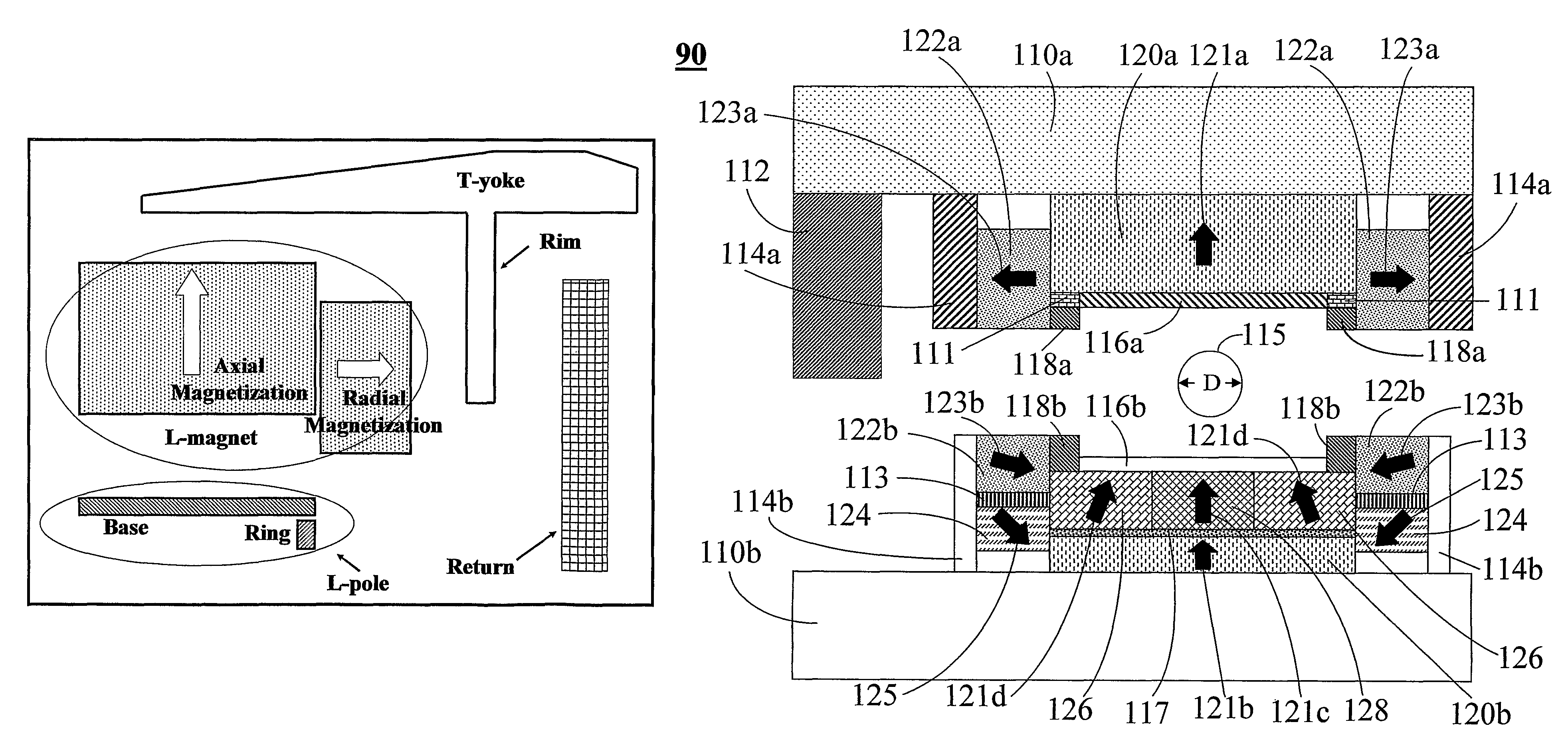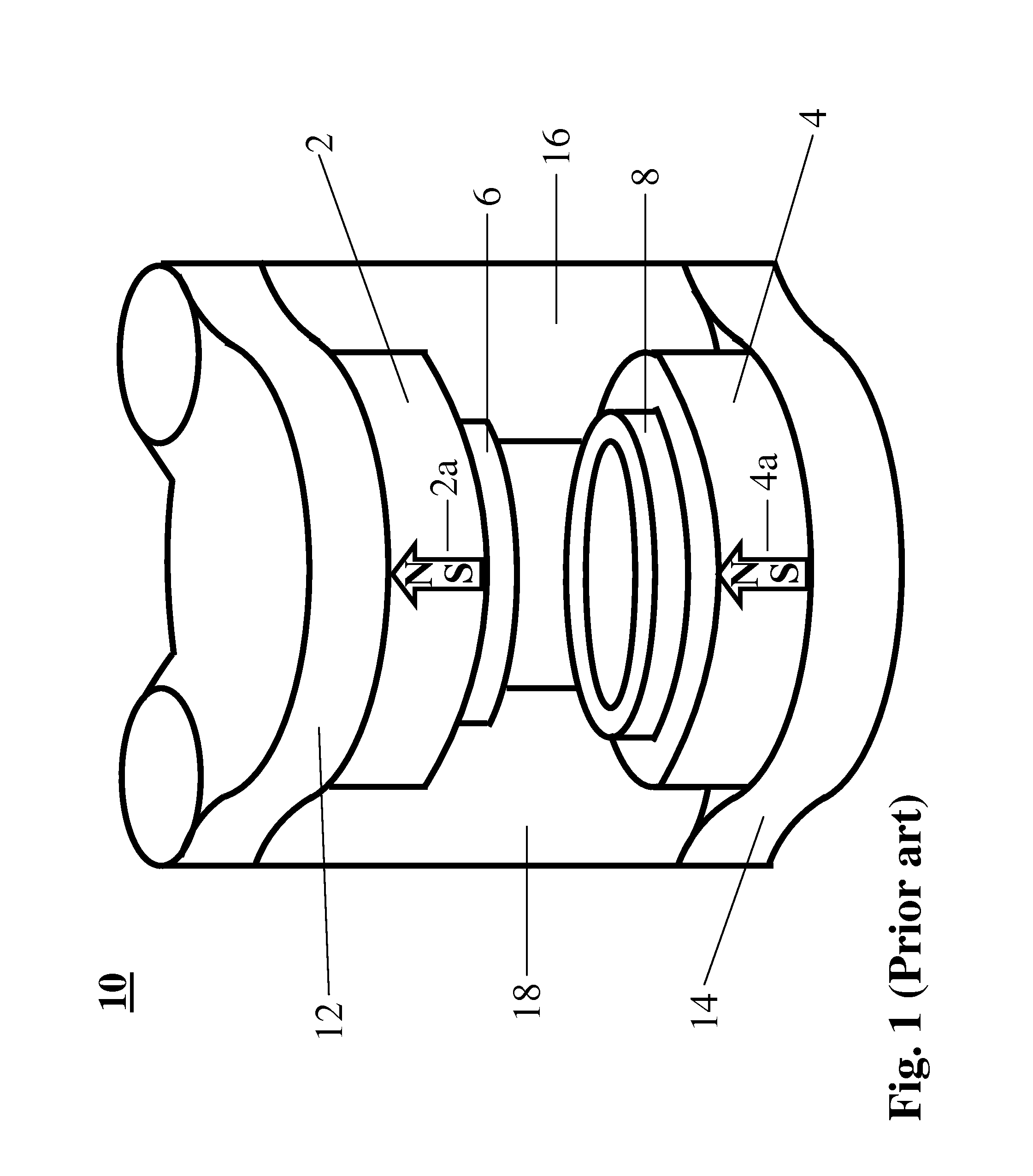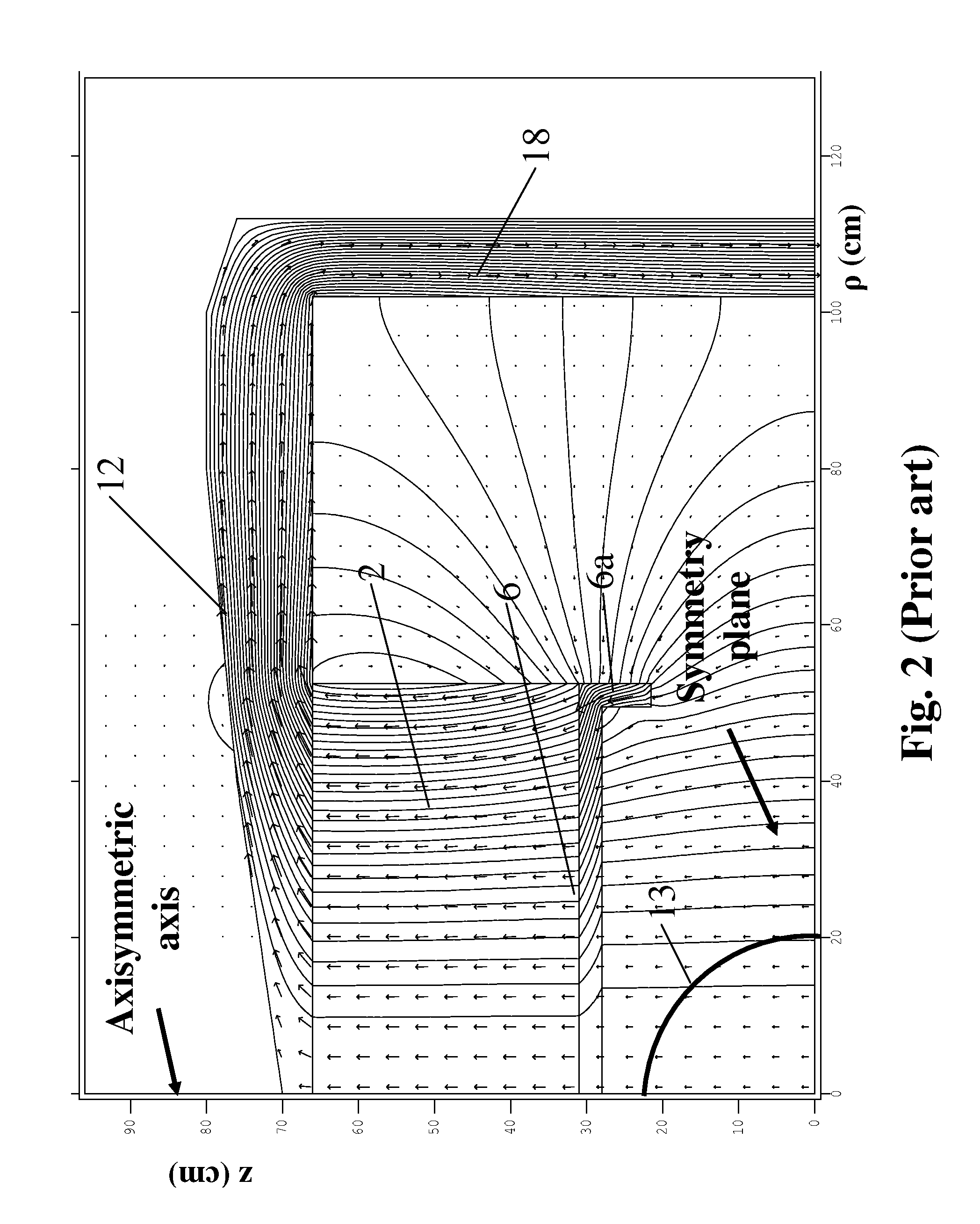Open MRI magnetic field generator
a magnetic field generator and open technology, applied in the field of permanent magnet designs, can solve the problems of high cost, limited, and limited use of most whole-body permanent magnet scanners, and achieve the effects of reducing fringe field generation, efficient yoke and return design, and high efficiency and practical design
- Summary
- Abstract
- Description
- Claims
- Application Information
AI Technical Summary
Benefits of technology
Problems solved by technology
Method used
Image
Examples
case 2
In Case 2, the ring magnet portions are all exhibiting a tilted magnetization orientation of 15° with respect to the horizontal, ρ-axis of FIG. 21. This is a very beneficial aspect of the invention as already mentioned previously adding about 100 G to the central field value and improving the homogeneity to about 500 ppm. A further enhancement upon this performance is changing the middle portions of the disk permanent magnets, 117a and 117b to a ferromagnetic material. As Case 3 shows, doing so adds about 30 G and has minimal impact on the central field value. However small this change is though the benefit from this part of the invention is for the assembly part of the magnet because the magnetic forces are significantly reduced if the disk magnets are split into at least two halves before insertion into the magnetic circuit. Furthermore, the flux lines are pulled back towards the returns away from the central portion of the magnet by making elements 117a and 117b a ferromagnetic m...
case 10
Case 10 is a check on the effect of just changing the magnetization orientation in the upper portion of the ring magnet 124. The result clearly shows that the central field value is increased by about 30 G without any effect on the homogeneity. Therefore, adjustments of this portion of the ring magnet give fine control over the central field value. Case 11 shows the benefits of changing the edge portion of the L-poles, 111 to a permanent magnet. It adds about 250 G to the central field value and significantly reduces the overall saturation of the L-poles. In contrast changing the Rose shims, 118, to permanent magnets, Case 12, has a similar effect as well and varying the magnetization orientation adjusts saturation of the L-poles and the overall homogeneity.
In more practical implementations of this magnet system a polygonal shape to the L-magnets and the L-poles is easier in which case the sections have to be at least 8 and preferably 32 or more for a better circumferential approxim...
PUM
| Property | Measurement | Unit |
|---|---|---|
| magnetic field | aaaaa | aaaaa |
| magnetic fields | aaaaa | aaaaa |
| magnetic fields | aaaaa | aaaaa |
Abstract
Description
Claims
Application Information
 Login to View More
Login to View More - R&D
- Intellectual Property
- Life Sciences
- Materials
- Tech Scout
- Unparalleled Data Quality
- Higher Quality Content
- 60% Fewer Hallucinations
Browse by: Latest US Patents, China's latest patents, Technical Efficacy Thesaurus, Application Domain, Technology Topic, Popular Technical Reports.
© 2025 PatSnap. All rights reserved.Legal|Privacy policy|Modern Slavery Act Transparency Statement|Sitemap|About US| Contact US: help@patsnap.com



